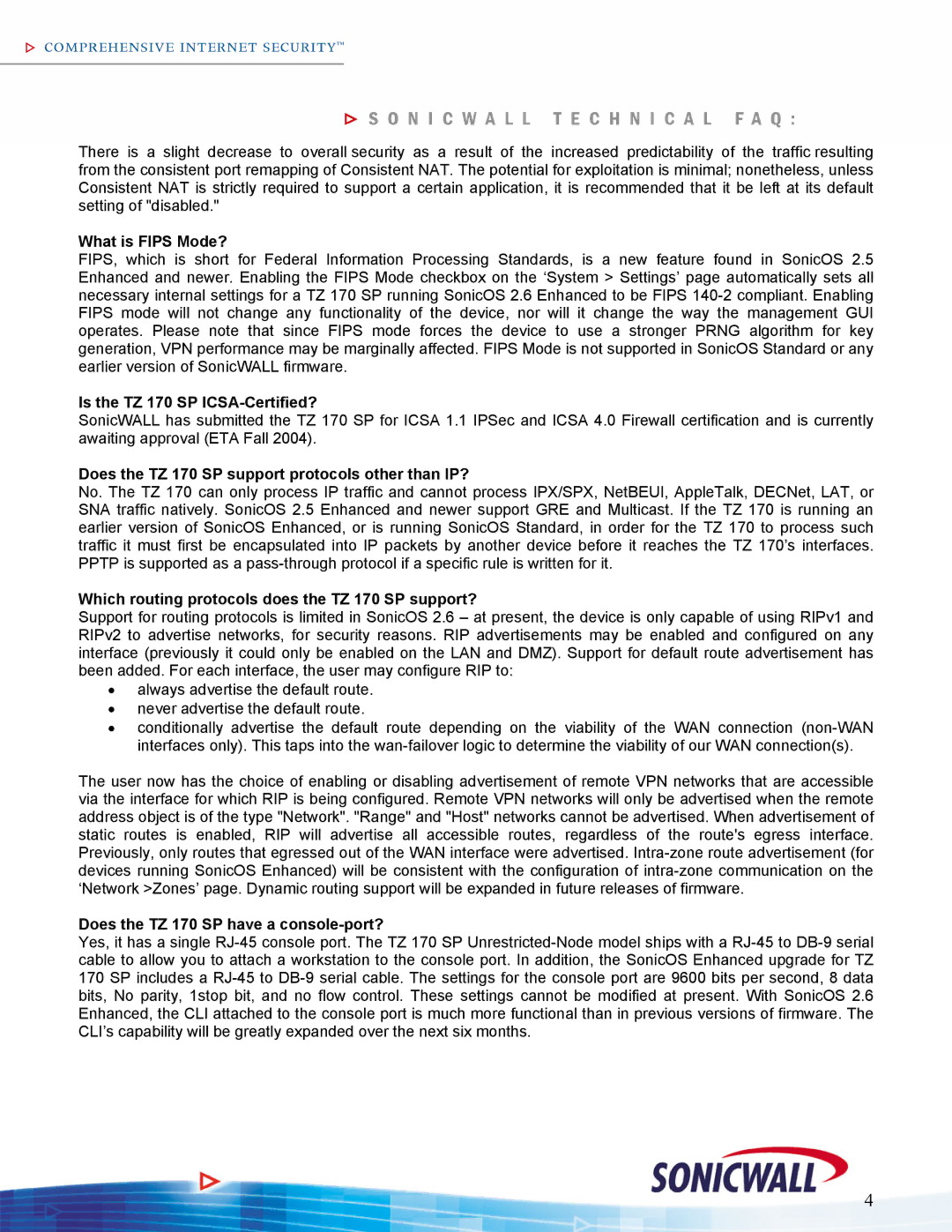
There is a slight decrease to overall security as a result of the increased predictability of the traffic resulting from the consistent port remapping of Consistent NAT. The potential for exploitation is minimal; nonetheless, unless Consistent NAT is strictly required to support a certain application, it is recommended that it be left at its default setting of "disabled."
What is FIPS Mode?
FIPS, which is short for Federal Information Processing Standards, is a new feature found in SonicOS 2.5 Enhanced and newer. Enabling the FIPS Mode checkbox on the ‘System > Settings’ page automatically sets all necessary internal settings for a TZ 170 SP running SonicOS 2.6 Enhanced to be FIPS
Is the TZ 170 SP ICSA-Certified?
SonicWALL has submitted the TZ 170 SP for ICSA 1.1 IPSec and ICSA 4.0 Firewall certification and is currently awaiting approval (ETA Fall 2004).
Does the TZ 170 SP support protocols other than IP?
No. The TZ 170 can only process IP traffic and cannot process IPX/SPX, NetBEUI, AppleTalk, DECNet, LAT, or SNA traffic natively. SonicOS 2.5 Enhanced and newer support GRE and Multicast. If the TZ 170 is running an earlier version of SonicOS Enhanced, or is running SonicOS Standard, in order for the TZ 170 to process such traffic it must first be encapsulated into IP packets by another device before it reaches the TZ 170’s interfaces. PPTP is supported as a
Which routing protocols does the TZ 170 SP support?
Support for routing protocols is limited in SonicOS 2.6 – at present, the device is only capable of using RIPv1 and RIPv2 to advertise networks, for security reasons. RIP advertisements may be enabled and configured on any interface (previously it could only be enabled on the LAN and DMZ). Support for default route advertisement has been added. For each interface, the user may configure RIP to:
•always advertise the default route.
•never advertise the default route.
•conditionally advertise the default route depending on the viability of the WAN connection
The user now has the choice of enabling or disabling advertisement of remote VPN networks that are accessible via the interface for which RIP is being configured. Remote VPN networks will only be advertised when the remote address object is of the type "Network". "Range" and "Host" networks cannot be advertised. When advertisement of static routes is enabled, RIP will advertise all accessible routes, regardless of the route's egress interface. Previously, only routes that egressed out of the WAN interface were advertised.
Does the TZ 170 SP have a console-port?
Yes, it has a single
4
